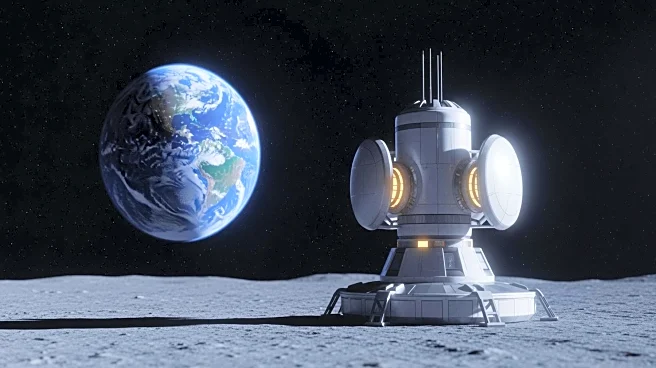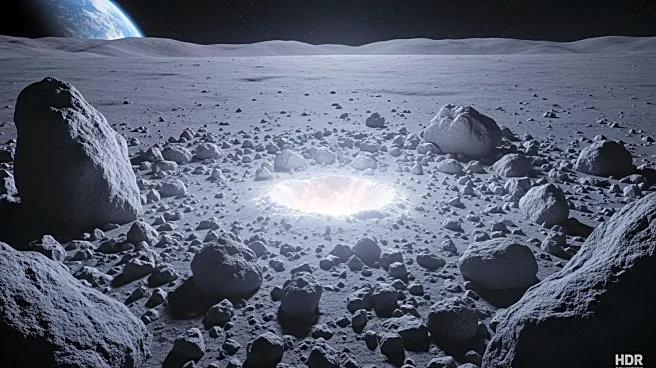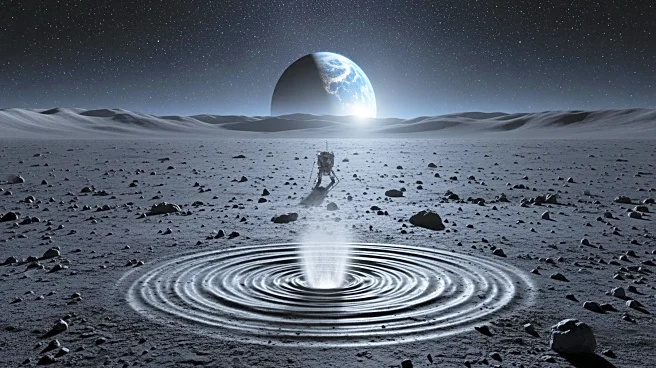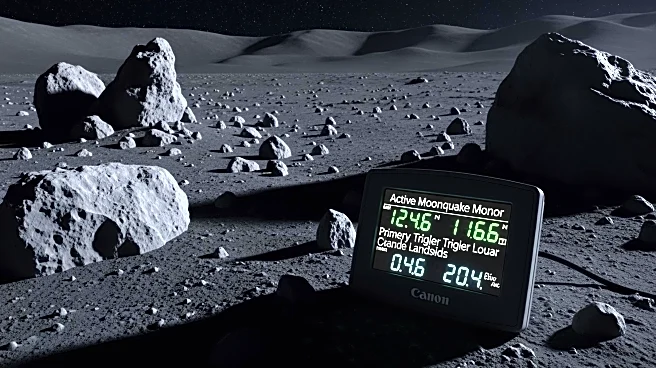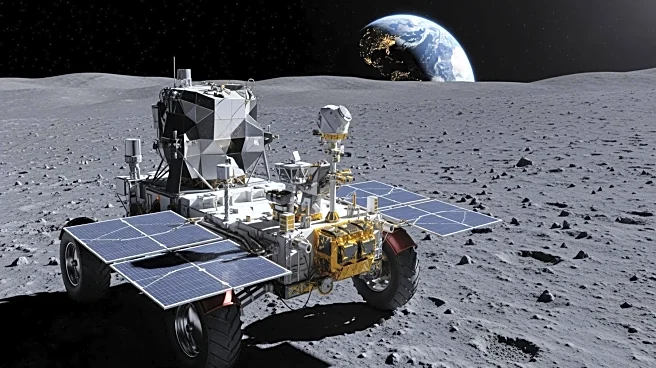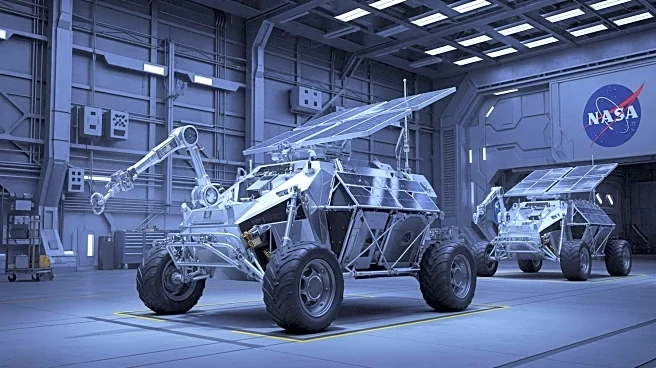What's Happening?
A recent study has identified moonquakes as the primary trigger for landslides on the Moon, challenging previous assumptions that meteoroid impacts were the main cause. Researchers analyzed 15 years of
lunar images from NASA's Lunar Reconnaissance Orbiter Camera, discovering 41 new landslides since 2009. These findings suggest that the Moon is more geologically active than previously thought, with seismic activity concentrated in regions like the eastern Imbrium Basin. The study, conducted by a team of Chinese scientists, emphasizes the importance of understanding lunar geological processes for future exploration and the establishment of permanent bases on the Moon.
Why It's Important?
The discovery of active seismic zones on the Moon has significant implications for future lunar missions and the safety of potential Moon bases. Understanding the triggers of lunar landslides is crucial for assessing geohazard risks and planning safe locations for infrastructure development. The findings highlight the need for careful consideration of seismic activity when designing lunar facilities, particularly avoiding steep slopes in active areas. This research advances scientific knowledge of lunar geology and informs mission planning, ensuring that future exploration efforts are conducted with a comprehensive understanding of the Moon's dynamic environment.
What's Next?
As plans for permanent Moon bases progress, researchers and space agencies will likely focus on further studying lunar seismic activity and its implications for infrastructure safety. This may involve deploying additional monitoring equipment and conducting detailed geological surveys to map active seismic zones. Collaboration between international space agencies and scientific institutions will be essential to develop strategies for mitigating geohazard risks on the Moon. The findings may also influence the design and location of future lunar facilities, prioritizing safety and resilience in seismically active regions.
Beyond the Headlines
The study's findings could lead to broader discussions about the challenges of establishing human presence on celestial bodies with active geological processes. Ethical considerations may arise regarding the prioritization of safety measures and resource allocation for lunar exploration. The research also underscores the importance of interdisciplinary collaboration in addressing complex space exploration challenges and ensuring the safety of future missions. Long-term shifts in space exploration strategies and policies could be influenced by these insights, potentially leading to more sustainable and resilient approaches to lunar development.





